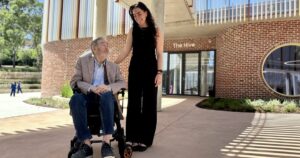
Quantum technologies, devices that operate according to the principles of quantum mechanics, hold the promise of groundbreaking innovations across various fields. However, these same principles often introduce complications that hinder the widespread adoption of these technologies. A recent study, published on November 14 in Physical Review Letters, highlights a surprising obstacle: the act of measurement itself. In an experiment, physicists constructed a microscopic quantum clock and discovered that the energy required to read these clocks can be up to a billion times greater than the energy needed to run them.
The findings underscore an often-overlooked aspect in quantum mechanics literature—the cost of observation. Despite the challenges, this additional energy could potentially lead to the development of more informative and ultra-precise clocks, provided physicists can harness it effectively. “Quantum clocks running at the smallest scales were expected to lower the energy cost of timekeeping, but our new experiment reveals a surprising twist,” said Natalia Ares, the study’s senior author and a physicist at Oxford University in the UK. “Instead, in quantum clocks, the quantum ticks far exceed that of the clockwork itself.”
Understanding Time in Quantum Mechanics
Time is a notoriously complex concept in quantum mechanics, where its influence is often weak or nearly irrelevant. However, real-world devices must contend with time-dependent phenomena. For researchers, this means that future quantum devices, such as sensors or navigation systems, will require ultra-precise internal clocks to minimize operational issues.
The measurement problem, illustrated by Schrödinger’s cat thought experiment, further complicates matters. Quantum systems can exist in superpositions of various states, but measurement collapses these possibilities into a single outcome. This paradox highlights the challenge of observing quantum systems without influencing them.
Typically, a conventional clock generates heat—and thus entropy, a measure of disorder—as it ticks. In most cases, this effect is negligible, leading many quantum researchers to overlook the impact of a clock’s ticks on quantum devices.
Experimenting with Quantum Ticks
In their experiment, the research team created a quantum clock using two electrons hopping between two regions. Each hop represented a “tick” of a traditional clock. They monitored changes in tiny electric currents and radio waves—two distinct quantum signals—and converted these changes into classical data for timekeeping. The researchers then compared the energy costs of the entropy generated by the electron “ticks” and the energy required to measure these ticks.
Surprisingly, they discovered that the latter “not only dwarfs the former but also unlocks greatly increased precision,” according to the paper.
Setting aside efficiency concerns, the additional measurement energy allowed the team to more precisely control the clock. This discovery opens new avenues for improving time-related operations in advanced computing systems.
Implications and Future Directions
Understanding these dynamics could be crucial for synchronizing time-related operations inside advanced computers, as noted by Edward Laird, a physicist at the University of Lancaster in the UK, who was not involved in the study. The findings also raise fundamental questions about whether the act of observation itself imparts directionality to time.
“By showing that it is the act of measuring—not just the ticking itself—that gives time its forward direction, these new findings draw a powerful connection between the physics of energy and the science of information,” explained Florian Meier, study co-lead author and a postdoctoral student at the Technische Universität Wien in Austria.
The study’s revelations about the energy costs of quantum clocks not only challenge existing assumptions but also provide a potential pathway to harnessing these costs for greater precision in quantum technologies. As researchers continue to explore the intersection of energy and information in quantum systems, the future of quantum clocks—and the devices they power—remains an exciting frontier.







